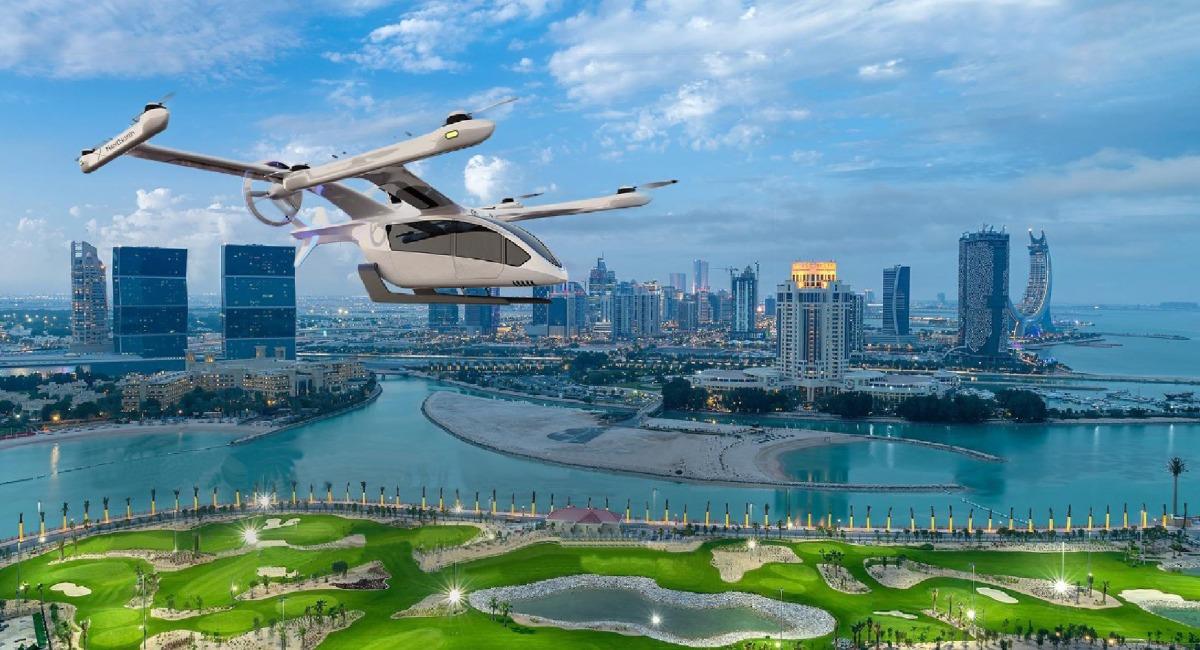
Event Discusses Technology For Introduction Of Air Taxis In Qatar
Doha, Qatar: The Third Qatar National Development Strategy (NDS3) focuses on benefiting from advanced technologies and achieving sustainable development and economic diversification to further boost Qatar's leading global position on the transportation map.
The first session of the Autonomous e-Mobility (AEMOB) Forum series entitled 'The Future of Air Mobility: Innovations & Emerging Trends' was held virtually yesterday during which experts explored the latest trends in autonomous e-mobility. It covered the elements shaping the field of air mobility including implementation programme of air taxis in 2025, standards and policies, market competition, societal incorporation, and the technical challenges and opportunities in the field.
Addressing the webinar, Shahram Tahmasseby, Research Associate, Qatar Transportation and Traffic Safety Center, Qatar University, highlighted the integration of autonomous air taxi to transportation network in Qatar. He shed light on challenges and obstacles which include infrastructure requirements, regulatory framework, safety standards and technological integration.
Tahmasseby said technology integration and advancement in digital technology requires advanced navigation systems.
The autonomous and semi-autonomous operation of air taxis could be achieved by utilisation of artificial intelligence and advanced navigation systems to enable autonomous or semi-autonomous flights, reducing the need for human pilots and increasing operational performance.
Read Also-
Things to do this weekend in Qatar (August 1-3)
Qatar Red Crescent Society inaugurates new residential village in Niger
Qatar to test air taxi, electric delivery planes early 2025
The integration of real-time data analytics and machine learning to optimise flight paths and manage air traffic dynamically is also important.
He said public and private partnerships (PPP) can be achieved by encouraging collaboration between government agencies such as the Ministry of Transport (MoT), Ooredoo, Vodafone, Mowasalat and private companies such as Uber and startups to fund and develop air taxi infrastructure to ensure broad access and equitable service distribution.
Elaborating on the infrastructure development, he discussed the designing of vertiports and vertistops and said these facilities can be located in trip generating zones and recreational areas such as Doha West Bay, Doha port, Doha airports, Lusail, Al Wakra, Al Khor, and Salwa beach.
To ensure a successful integration of air taxis in Qatar's transport system (or any country in general) includes smart city integration, smartphone based tool, and economic and social considerations, he added.
For smart city integration, data sharing can be achieved by the internet of things (IoT) to connect air taxis with urban infrastructure, enabling real-time data sharing for traffic management and weather updates.
While the smartphone based tools and platforms such as Sila (a journey planner by MoT) can be used for the development of user-friendly mobile applications for booking, tracking and paying for air taxi rides, integrating them with existing ride-sharing and public transportation apps. Autonomous air taxi services information could be included into the Sila platform.
Recently MoT put plans to test the services of the electric air taxi and electric delivery planes in the early 2025, as it continues implementing its strategies that aim for developing and operating an integrated mobility ecosystem in Qatar.
This step will contribute to supporting the performance of Qatar's transportation sector by introducing the new concept of air mobility, which uses latest global technologies and artificial intelligence, thereby enhancing the public transit system's integration, coherence, sustainability, and eco-friendliness.
Tahmasseby further noted that the integration with existing Doha public transportation systems is required which includes transit hubs. Therefore vertiports need to be integrated with existing transportation hubs such as Hamad International Airport, DECC Metro Station, Msheireb, Al Wakra, Al Aziziya Metro stations and Leghtefiya Metro/Tram stations.

Legal Disclaimer:
MENAFN provides the
information “as is” without warranty of any kind. We do not accept
any responsibility or liability for the accuracy, content, images,
videos, licenses, completeness, legality, or reliability of the information
contained in this article. If you have any complaints or copyright
issues related to this article, kindly contact the provider above.


















Comments
No comment